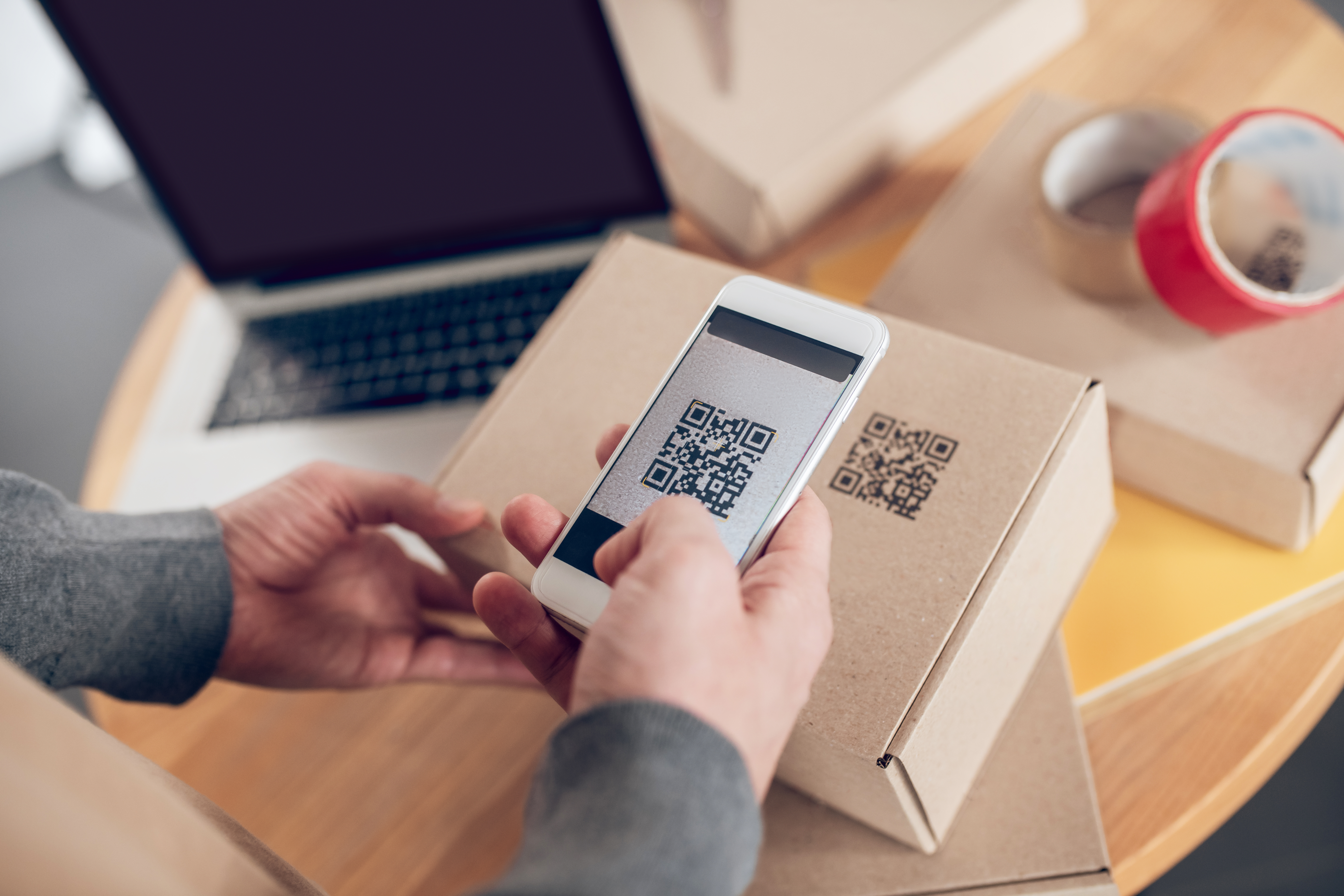Barcodes have long been reliable, fast and simple, but they’re limited. A typical barcode holds just one piece of data, usually an item code.
Until now, that’s been enough. But as operations become more connected, that simplicity becomes a constraint.
QR codes can store multiple data points in a single scan, including batch numbers, expiry dates and handling instructions. This reduces manual entry, eliminates workarounds, and adds context to every transaction.
While a shift to QR codes calls for checking scanner compatibility, the real change is strategic: connecting physical assets with digital systems for smarter, faster decision-making.
As automation, AI and system integration become more accessible to small and mid-sized businesses, the question is no longer can SMEs use this technology, but should they?
Barcodes vs QR codes: What’s the difference?
A barcode is one-dimensional. It holds a single piece of data, usually an item code, and is scanned horizontally using a traditional laser scanner. That’s useful for basic identification or stocktake, but it stops there.
A QR code is two-dimensional. It can store multiple data points in a single image: batch number, expiry date, serial number, location details, and more. Instead of a laser scanner, it’s read by a camera or smart device capable of capturing and decoding that information simultaneously.
A QR code can trigger a more intelligent process. It can feed directly into your ERP, auto-populate fields, reduce manual entry, and surface meaningful insights, enriching your supply chain with real-time, actionable data.
Why QR codes matter for SMBs
QR codes, which have been around since 1994 (1), were once costly to implement, requiring specialised hardware, custom development, or third-party tools. Today, SMEs can generate QR codes for free and scan them using standard mobile devices. And while some legacy barcode scanners might not recognise two-dimensional codes, most modern devices are equipped to handle them. ERP platforms like SAP Business One even include native QR code support, making adoption simple and low-cost.
The real value lies in what happens next. When you scan a QR code, it captures more detailed data right away, enabling routine tasks – like updating records or flagging problems – to happen automatically, without manual input. Tools like Microsoft Power Automate can do this in real-time.
And with AI agents emerging at lightning speed, businesses can now access and act on data like never before. By adopting QR codes, SMEs equip these smart tools with the rich data they need to automate workflows and boost efficiency.
For SMEs, this delivers a range of operational benefits:
- Less manual entry and fewer errors
- Faster, more responsive processes
- Real-time issue resolution
- Context-rich data for smarter decisions
- Scalable automation without added headcount
In a competitive market, that’s a clear operational advantage.
Common myths about QR code adoption (and why they don’t hold up)
Switching to QR codes may sound like a big shift, but many of the concerns holding businesses back are based on outdated assumptions.
Myth 1: “We’ll need to upgrade all our hardware.”
QR codes don’t require specialist scanners. Most smartphones and tablets can read them with built-in cameras without further hardware investment.
Myth 2: “Our staff won’t have time to learn a new system.”
Scanning a QR code is as simple as taking a photo. Most employees already know how to do it, and the rollout process can be phased in with minimal training.
Myth 3: “Integration will be too complex or expensive.”
Modern ERPs such as SAP Business One already include QR code generation and support. There’s no need for third-party tools or costly development.
Myth 4: “We can’t afford to disrupt our operations.”
QR codes and barcodes can coexist. Many businesses start small by adding QR codes to specific products or departments and scale once the benefits are clear.
The opportunity: Smarter data, better operations
With richer, multi-point information available at the moment of scan, day-to-day business operations become faster, more accurate and far less manual.
For small and mid-sized businesses, that means:
- Delivery instructions can be encoded directly on dispatch dockets, reducing miscommunication and improving fulfilment accuracy.
- Repetitive tasks like entering expiry dates, batch numbers or stock locations can be automated, saving time and reducing errors.
- Tracking and reporting become more detailed, supporting better compliance and enabling proactive decision-making.
Those who adopt QR codes now will move faster, serve customers better, and build operational resilience ahead of their competitors.
Connecting QR codes to your business systems
QR codes aren’t a passing tech trend. They’re a practical, low-friction step toward more connected, intelligent operations, especially when paired with an ERP platform like SAP Business One, which has native QR code generation.
Whether you're scanning stock into the warehouse, updating purchase orders, or fulfilling customer deliveries, the information is immediately available to the relevant departments.
This results in fewer silos, greater accuracy, and smarter decision-making powered by real-time data.
A timely shift for SMEs
As ERP and automation tools continue to evolve, early adopters will gain a distinct advantage in terms of efficiency and decision-making. Where previous technology shifts took years to catch up, this time the pace is faster. Now, you can capture more data effortlessly and automate actions without extra cost.
At Key Business Solutions, we help SMEs take advantage of QR code capabilities in SAP Business One, whether that means piloting them in one area or integrating them more broadly across operations. Ready to get started? Speak to our team.
(1) https://www.microsoft.com/en-us/microsoft-365-life-hacks/privacy-and-safety/brief-history-qr-codes




